October is almost half gone and before you know it the holidays will be fast approaching. The beginning of the holiday season for many people starts around thanksgiving, but for the retail industry and the small shop owner the season has already started. Security during this time of year is a challenge for the retail industry to say the least. Preventing shoplifting requires them to be aware of the new trends in technology and decide what will work for them. Will they need to hire more loss prevention personnel? Are the new cameras working as expected? Are the new hires trained and ready for the challenge of stopping a shoplifter? The challenges facing the retail industry are many, and during this time of year, shoplifting and employee theft are very serious concerns for them.
Video Surveillance Tools: Seeing the Big Picture
Before deciding on a digital video security system, learn how the technologies work.
Video surveillance systems have become a mainstay for many loss prevention programs. As the technology evolves and business needs grow more complex, loss prevention leaders are looking for solutions that are both affordable and capable of meeting the escalating demands of the business.
LP Magazine sat down with Mike Dunn, vice president of business development for BSI, to garner his expertise and insights on building effective video surveillance systems and how to get the most out of existing systems to help maximize retailers’ options and investment.
What are the primary considerations when choosing between an analog versus an Internet protocol (IP) camera system?
Before deciding on a video option, it is advisable to first understand how the technologies work, as the differences in both camera technologies and method of video transmission are critical to developing a well-planned video solution.
Shrinkage causes $123b loss to global retailers
Shrinkage is defined as losses from shoplifting, employee or supplier fraud and administrative errors.
The retail sector in the Middle East should adopt effective strategies and solutions to curtail ‘shrinkage’ to improve profitability as it caused up to $123.39 billion in loss to global retailers in 2014-15, experts say.
Referring to the latest Global Retail Theft Barometer Study conducted by Checkpoint Systems, the industry experts claimed that shrinkage, defined as losses from shoplifting, employee or supplier fraud and administrative errors, accounted for 1.23 per cent of total retail sales in 2014-15 compared to 0.94 per cent in the previous year.
Jayant Ghosh, business development manager, Checkpoint Middle East and Africa; and Ben Chua, Checkpoint product director for Asia Pacific, said shrinkage increased globally as retailers spent less on prevention and there was in increase in the type of products being targeted.
“In the US, we saw that apparel stores suffered the highest rates of shrink [2.28 per cent] followed by pharmacies/drugstores [2.25 per cent] and non-grocery retailers [1.9 per cent],” Chua recently told Khaleej Times on the sidelines of an event in Dubai.
Column: Everett boutique owner shocked by rampant shoplifting
By Kylie Sabra
Guest columnist
I have never shoplifted in my life — not even as a child.
It simply never occurred to me to take something that was not mine.
I am new to retail and I absolutely love my new life. Running ReFresh Boutique allows me to engage my artsy tendencies as well as my planning and logistical skills. I’ve lived a protected life I suppose. My professional career was in corporate marketing and communications where I dealt with a microcosm of humanity. I now find myself exposed to a far wider range of personalities, and most of them I enjoy immensely.
Then, there are the issues.
I remember how heartsick I felt the first time someone stole from me. It was an all-to-common occurrence.
I’ve been able to reduce much of the theft problem by adjusting security cameras and rearranging the store to remove blind spots and closely observing people with large bags, coats, purses and the like.
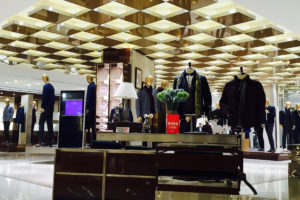
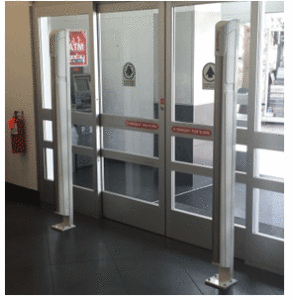 We are getting ready for an increase in customer traffic. Is your Checkpoint System ready? Are you having false or phantom alarms? Is the system working properly? Have you had your system tuned or a Preventative Maintenance (PM) conducted in the last year or even 5 years?
We are getting ready for an increase in customer traffic. Is your Checkpoint System ready? Are you having false or phantom alarms? Is the system working properly? Have you had your system tuned or a Preventative Maintenance (PM) conducted in the last year or even 5 years? Hiring seasonal help for the holidays is much different from when a company hires to fill a position or two during the “regular” times of the year. During what I have traditionally called the 4
Hiring seasonal help for the holidays is much different from when a company hires to fill a position or two during the “regular” times of the year. During what I have traditionally called the 4 Ghosts, goblins, zombies, it’s that time of the year again to dust off the spooky movies and scary tales meant to put a chill up your spine. Hollywood always seems to have a batch of new releases ready about now to evoke nightmares and make us wake up in a cold sweat. We are sure that we see a poltergeist lurking in the corner of the bedroom or in the closet after we watch one of these films. Yes, I admit I am a big coward and have to put my hands over my face and peek out through my fingers to watch Freddy slash his next victim or Jason terrorize a group of kids at a camp in the middle of the woods. But there are real scary stories of my own to share that don’t have anything to do with ghouls. Mine are real-life scary stories of shoplifters I have dealt with during my years in retail Loss Prevention.
Ghosts, goblins, zombies, it’s that time of the year again to dust off the spooky movies and scary tales meant to put a chill up your spine. Hollywood always seems to have a batch of new releases ready about now to evoke nightmares and make us wake up in a cold sweat. We are sure that we see a poltergeist lurking in the corner of the bedroom or in the closet after we watch one of these films. Yes, I admit I am a big coward and have to put my hands over my face and peek out through my fingers to watch Freddy slash his next victim or Jason terrorize a group of kids at a camp in the middle of the woods. But there are real scary stories of my own to share that don’t have anything to do with ghouls. Mine are real-life scary stories of shoplifters I have dealt with during my years in retail Loss Prevention.
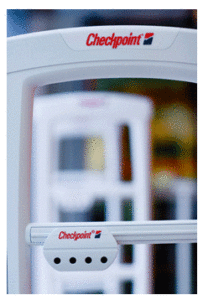 forbid a competitive system). It is installed and your shoplifting losses go down. They will! The simple act of installing a system will make a percentage of your shoplifters go elsewhere.
forbid a competitive system). It is installed and your shoplifting losses go down. They will! The simple act of installing a system will make a percentage of your shoplifters go elsewhere.


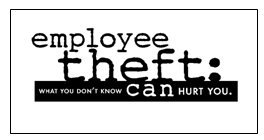 ch these live webinars as reasonably often as you need. Staff turnover, promotions, follow up training, one employee or fifty…. Just schedule the session. Oh, by the way. I will also provide you with 15 draft LP Policies and Procedures that you can customize to your operation. Shoplifting, employee theft, robbery, key control…..
ch these live webinars as reasonably often as you need. Staff turnover, promotions, follow up training, one employee or fifty…. Just schedule the session. Oh, by the way. I will also provide you with 15 draft LP Policies and Procedures that you can customize to your operation. Shoplifting, employee theft, robbery, key control…..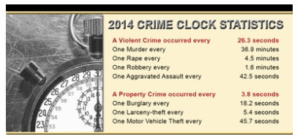
 If you work in retail then you know theft is a big problem. The theft of supplies, merchandise, time and money are just a few of the things managers have to deal with daily. They have to address it on many fronts (i.e., impulse and professional shoplifters, employees and their friends and families, vendors).
If you work in retail then you know theft is a big problem. The theft of supplies, merchandise, time and money are just a few of the things managers have to deal with daily. They have to address it on many fronts (i.e., impulse and professional shoplifters, employees and their friends and families, vendors).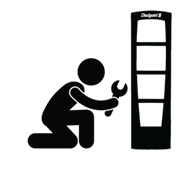 Retail alarms are necessary to ensure a store is protected against break-ins and even theft from within. I know from personal experience that they work. As a Loss Prevention Manager I once had to respond to a burglary alarm when two young men threw a cement block through the front doors of my store in the middle of the night. I also responded to a number of false alarms due to system errors and failures. As a Manager On Duty I know that it can be stressful wondering if you locked all the doors and set the alarm at the end of the night. With those situations in mind, I would like to provide some practical tips to help avoid excessive false alarms and worry about building security.
Retail alarms are necessary to ensure a store is protected against break-ins and even theft from within. I know from personal experience that they work. As a Loss Prevention Manager I once had to respond to a burglary alarm when two young men threw a cement block through the front doors of my store in the middle of the night. I also responded to a number of false alarms due to system errors and failures. As a Manager On Duty I know that it can be stressful wondering if you locked all the doors and set the alarm at the end of the night. With those situations in mind, I would like to provide some practical tips to help avoid excessive false alarms and worry about building security. What can make life miserable for a Human Resources or Hiring Manager? In the right circumstances, a Loss Prevention Manager can be the cause of much consternation for a Human Resources Manager. When more than one employee is being apprehended or fired for theft at the same time it requires shifting schedules, moving people around and hiring new people to take the place of the employees being removed. What makes it even more difficult for a retail H.R. Manager is if the employees work in a specialized job function. I confess (with a smile on my face as I write this) that I was responsible more than once for putting a Human Resource Manager in this predicament during my Loss Prevention Manager career. Don’t misunderstand, I was not taking pleasure in the misery of the Human Resource Manager or the Department Manager, for that matter; I was enjoying closing an investigation that netted around five employees in total, three who worked in the one area.
What can make life miserable for a Human Resources or Hiring Manager? In the right circumstances, a Loss Prevention Manager can be the cause of much consternation for a Human Resources Manager. When more than one employee is being apprehended or fired for theft at the same time it requires shifting schedules, moving people around and hiring new people to take the place of the employees being removed. What makes it even more difficult for a retail H.R. Manager is if the employees work in a specialized job function. I confess (with a smile on my face as I write this) that I was responsible more than once for putting a Human Resource Manager in this predicament during my Loss Prevention Manager career. Don’t misunderstand, I was not taking pleasure in the misery of the Human Resource Manager or the Department Manager, for that matter; I was enjoying closing an investigation that netted around five employees in total, three who worked in the one area.